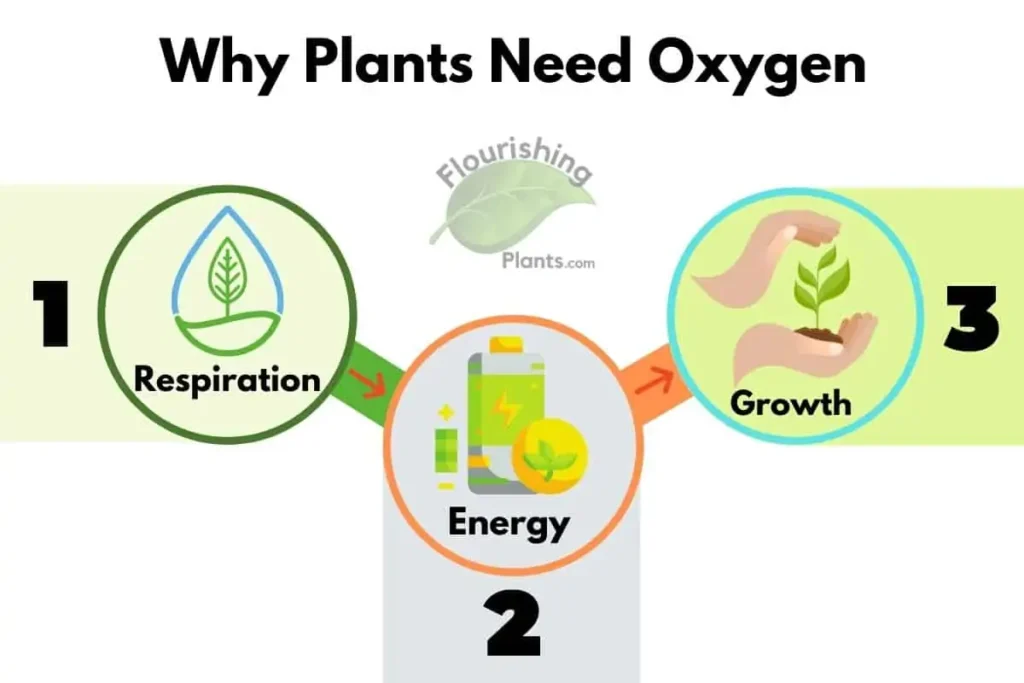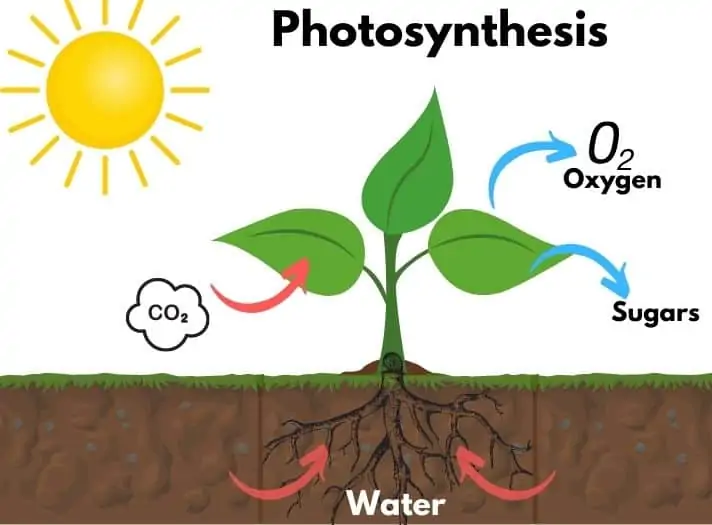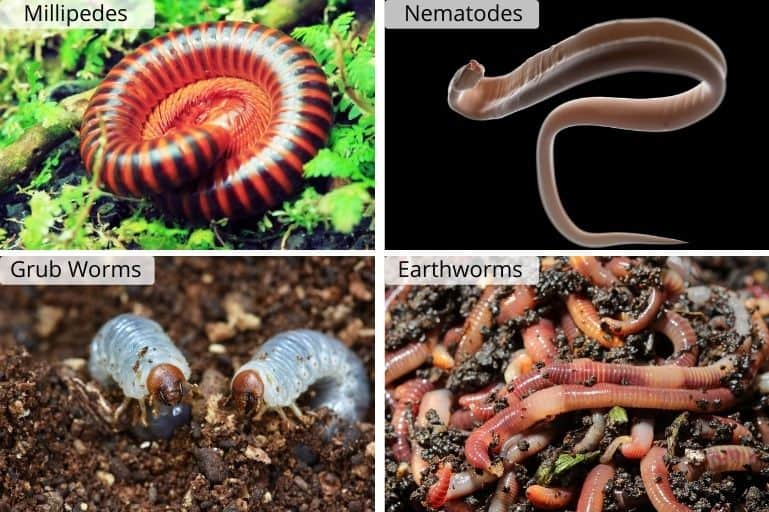What Process Requires Animal And Plant Cells To Use Oxygen?
Just like animals, plants also need oxygen for survival. Therefore, oxygen is an of import constituent of establish life. It is required for breaking downward sugars through a process chosen respiration (cellular respiration).
Plants demand oxygen for respiration which occurs in the cells mitochondria. Here, oxygen is used to break down complex sugars produced during photosynthesis, and energy, carbon dioxide, and water is produced. This procedure is called anaerobic respiration and the energy produced is used for plant growth.
Respiration is responsible for proper growth and maintaining the life span of plant tissues.
Practice Plants demand Oxygen?

Oxygen is a precious treasure both for the plants and the animals on Earth. In the absenteeism of oxygen, plants may not be able to pause the glucose molecule.
No respiration volition occur, and the plant volition die.
Respiration commonly occurs during the nighttime; plants consume oxygen, which plays a part in the breakdown of glucose to maintain the carbon bicycle in every prison cell.
During the daytime, plants utilise oxygen for the process of photosynthesis which is so exhaled as a by-product.
Equally a issue, plants do not use oxygen during the daytime as it is not needed to brand or synthesize nutrient.

Where Does Oxygen Come From?
Oxygen needed for food breakdown by the establish and for animals mostly comes from the oceans.
Plants like kelp, algal plankton, and phytoplankton are responsible for producing oxygen in bulk quantities.
Co-ordinate to scientists, nigh 50 to 60 percent of oxygen comes directly from oceans.
Prochlorococcus, a tiny photosynthetic organism solitary, produces almost 20 percent oxygen in the entire biosphere.
Whereas on the other paw, the plant itself prepares oxygen during the mechanism of photosynthesis.
That oxygen is utilized by the animals every bit well every bit past plants during nighttime for their normal functioning.
Moreover, oxygen is also present in the atmosphere in an abundant quantity.
Plants intake this oxygen at nighttime with the help of the special apertures or the lenticels that are generally present on the trunk of the plant torso.
During the daytime, plants cannot utilize the oxygen that comes from the sea (by the bounding main plants ) or the atmosphere.
This is because plants are producing their oxygen every bit a by-product during photosynthesis.
Photosynthesis reaction:

How practice Plants get Oxygen?
Plants go oxygen from the air around them by intake through the stomata where information technology enters the plants and is used by the mitochondria in plant cells. This is chosen aerobic respiration.
Respiration reaction:

Air contains approximately 20.8% oxygen.
Plants, like humans, plants apply oxygen in the same way, for respiration.
Respiration is a process in living organisms involving the product of energy, typically with the intake of oxygen and the release of carbon dioxide from the oxidation of circuitous organic compounds.
Stomata are prison cell structures constitute on the epidermis of tree leaves that are involved in the commutation of carbon dioxide and water betwixt plants and the atmosphere.

In that location are two types of respiration in plants:
Photo-Respiration
Photorespiration is where respiration takes place in the presence of lite.
Nighttime Respiration
During night respiration, carbon dioxide is released without the presence of low-cal.
| Photorespiration | Dark respiration |
|---|---|
| Photorespiration means the process of respiration which takes place where carbon dioxide is given out which is the reverse process of photosynthesis. | Dark respiration is a form of respiration in which carbon dioxide is released without the presence of lite. |
| Photorespiration is dependent on light | Dark respiration is independent of light. |
| Photorespiration is dependent on the Calvin cycle | Dark respiration does depend on the Calvin cycle. |
| Photorespiration involves a glycolate pathway. | Night respiration involves the glycolate pathway, Krebs cycle, and final oxidation. |
| In photorespiration, ane molecule of NH3 is released per molecule of CO2. | In night respiration, there is no production of NH3. |
| Photorespiration is an energy waste process. | Dark respiration is an free energy-producing procedure. |
| The temperature required for photorespiration is 25-35?. | Dark respiration is not temperature sensitive. |
The Plant Cell
Institute cells are eukaryotic cells present in greenish plants, photosynthetic eukaryotes of the kingdom Plantae. Their distinctive features include primary cell walls containing cellulose, hemicelluloses, and pectin [Source]

Parts of the Institute Cell
Cell Membrane –
The jail cell membrane, also chosen the plasma membrane, is plant in all cells and separates the interior of the cell from the outside surround.
Chloroplast –
Chloroplasts are establish cell organelles that convert calorie-free energy into relatively stable chemical energy via the photosynthetic process
Nucleus –
Stores the cell'due south hereditary material, or DNA, and it coordinates the prison cell'south activities, which include intermediary metabolism, growth, protein synthesis, and reproduction (jail cell division).
Vacuole –
Stores water and maintains turgor pressure in a establish cell. Information technology as well pushes the contents of the prison cell toward the prison cell membrane, which allows the plant cells to take in more low-cal energy for making food through photosynthesis.
Mitochondria –
Mitochondria are the chief sources of energy for each prison cell, and therefore for the establish every bit a whole.
What Found Cell uses Oxygen
The mitochondria are the part of the establish cell that uses oxygen in the respiration process.
The mitochondria are the powerhouse of the prison cell because it takes the food from photosynthesis and breaks it downwardly in the presence of oxygen and makes energy for the plant to employ.
Different cells have different amounts of mitochondria cells present and can produce varying quantities of energy at a time depending on the oxygen supply and demand.
How Much Oxygen Do Plants Demand?

Plants need oxygen, especially at night fourth dimension for respiration (gaseous exchange) or the purpose of homeostasis.
At night time, they need an arable supply of oxygen for their cellular activities. So it is usually said to avert sleeping under plants or trees at dark.
Because plants require the maximum corporeality of oxygen, information technology may be a great cause of reducing the oxygen content.
So it may crusade suffocation, and the person sleeping nether the tree might plummet due to the deficiency of oxygen.
So past this mutual discussion, we can hands sum up that oxygen is essential for the survival of the plants or we tin can assume that how much quantity of oxygen would be needed or required by the plants every bit well.
Do Plant Roots Need Oxygen?

Yes, of course, plants require a great bargain of oxygen to grow and nourish their roots properly.
Information technology is ordinarily stated that the growth of a plants body occurs maximum at the tips of the roots or the twigs or branches.
So for the proper growth of the roots, sufficient amounts of oxygen would be required.
For this purpose, plants adapt to absorb maximum oxygen from their surroundings.See how to increase dissolved oxygen in water for plants.
Ane of the main reasons for proper root growth is that longer roots would help the plant take in more h2o from an underground area of the soil.
An evident fact that roots need oxygen is in aquaculture. When plants are grown in both aquaponic and hydroponic water, root health is crucial to plant health and is straight linked to the dissolved oxygen present in the water.
A sufficient corporeality of oxygen results in healthy white roots while oxygen-deficient environments tin atomic number 82 to dark and rotting roots.
The overall issue is poor plant health as the roots fail to absorb nutrients from their environs.
Tin can Plants Survive Without Oxygen?
No, plants cannot alive without oxygen. They will eventually die if they do not go the required amount of oxygen, merely like the animals.
Plants feed on oxygen to carry out the procedure of respiration.
In the absence of oxygen, plants cannot break the molecules of glucose down.
Equally a result, the unbroken glucose molecules would not be able to produce the required amount of energy needed past the establish trunk to accomplish its daily activities.
So the absence of energy due to the lack of oxygen would be a cause of death and decay of the plant body parts.
Nevertheless, the plants will make their maximum efforts to fulfill the energy requirements by breaking some of the food molecules in the absence of oxygen.
But this will produce the least amount of energy that would not be able to perform all of the activities of the plants.
So the plant may plummet. It is commonly stated that plants tin can non live without oxygen, and information technology is hundred per centum true.
Further inquiry shows that:
In the absence of oxygen, acidification occurs inside the cells of the institute which are transformed into lactate and ethanol, this forms the foundation for fermentation.
Therefore without oxygen plants will essentially ferment and dice.
Fermentation reaction:

Can Plants Produce Oxygen to Sustain Themselves?
In an enclosed environment such as a terrarium, plants tin live for years past recycling the profits and byproducts of photosynthesis and respiration.
A terrarium is an enclosed ecosystem where plants and microbes live in perfect symbiosis with each other. No external gases or nutrients are added. Merely calorie-free is provided from the exterior.
Fifty-fifty though plants produce oxygen through photosynthesis, they cannot survive without it.

Do Plants Utilize More Oxygen During The Daylight or at Night?
A general observation is that plants use more oxygen at night, and the least corporeality of oxygen is used in the daytime.
It is because at day fourth dimension, due to the sunlight, plants comport out a process known every bit photosynthesis to industry their nutrient.
During the process, an excessive corporeality of oxygen is prepared equally a past-product.
So they produce oxygen past themselves nether sunlight.
But at night, the mechanism of photosynthesis cannot occur because of the absence of sunlight, so they need oxygen in maximum concentration to carry out all of their other activities except food synthesis.
From what was discussed, plants cannot survive or alive in the absence of oxygen due to many of their cellular activities that crave their presence.
Even shortage of oxygen for a limited time may too exist a significant cause of the expiry of the plant.
How practice Plants Purify the Air?
Plants purify the air through photosynthesis. The plant absorbs carbon dioxide through its leaves where a chemic reaction occurs with the chlorophyll in the presence of calorie-free which produces glucose (food for plants) and oxygen which is released back into the air.
Plants make clean the air within our living space by breathing in the air via their stomata, found on the underside of their leaves, and pores in their roots.
Harmful compounds such as VOCs (Volatile Organic Compounds) are produced past various materials in our home and offices which are so filtered by plants which in plow releases oxygen into the air we breathe.
Does Soil Need Oxygen?
Roots
Every bit explained in a higher place, roots demand oxygen for the product of food to grow.
In nature, most of the oxygen deficiency in plants is acquired past waterlogging whereby all the pore spaces in the soil are taken up by water causing the roots to stifle which in turn stifles the unabridged establish.
This results in the yellowing of leaves and plants leaves dropping.
Oxygen Absorption by the roots supplies the constitute with the majority of oxygen is required to survive.
Microbes
Microbes are living organisms that live within the soil breaking down organic matter into nutrients for the found to blot.
The process in which the organic thing is cleaved downward requires energy. Microorganisms employ available oxygen from the soil for respiration to create the energy needed to perform such tasks.
Worms

Worms are larger organisms that also live in the soil and become oxygen via the process of diffusion.
They respire by absorbing oxygen through their skin which is so carried to the areas required by a network of capillaries.
Worms are much larger than microbes and will utilize upward more oxygen.
Without oxygen, these soil organisms will too suffocate and die.
Will Plants Grow Bigger if Given More Oxygen?
Rubisco, 1 of the most important enzymes in photosynthesis, can demark to O2, leading to less efficient photorespiration, instead of photosynthesis.
High amounts of oxygen arent going to be more than benign in plants with respect to their growth.
Source: https://flourishingplants.com/do-plants-need-oxygen/
Posted by: herrerabeinglis.blogspot.com

0 Response to "What Process Requires Animal And Plant Cells To Use Oxygen?"
Post a Comment